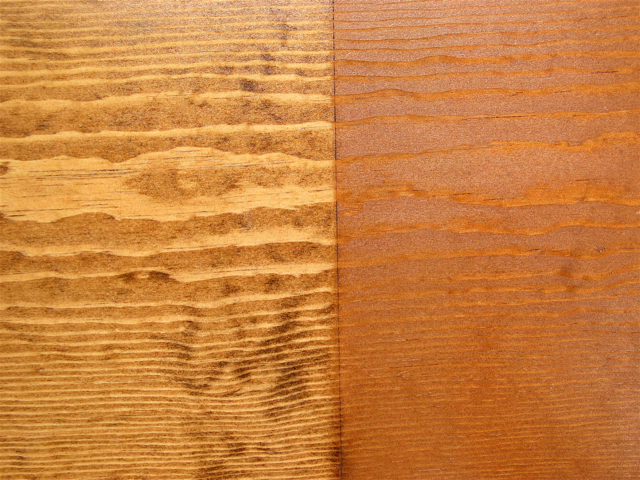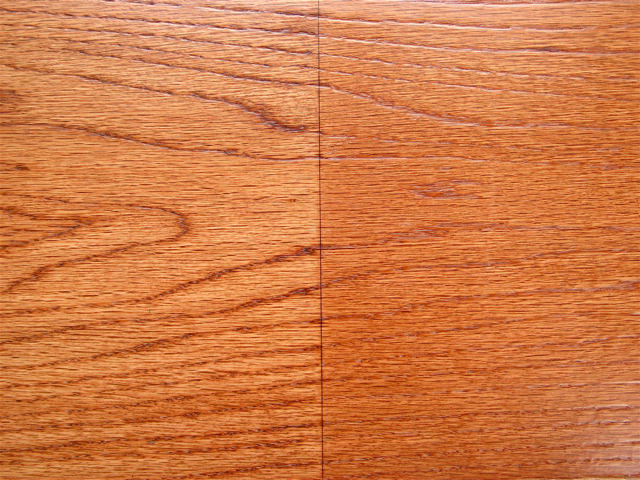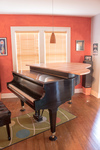We may receive a commission when you use our affiliate links. However, this does not impact our recommendations.

This panel shows the different looks you get by wiping off the excess stain (left) vs. not wiping on pine.

This panel shows the same on oak.
The usual way of applying stain is to apply a wet coat and wipe off the excess before it dries. You can use a rag, brush or spray gun to apply the stain. When you wipe off the excess, you remove it everywhere except where the stain has soaked into the wood or lodged in the grain. So the stain highlights the grain and blotching in blotch-prone woods such as softwoods and tight-grained hardwoods.
Highlighting the grain is usually, but not always, a desired effect. But blotching is a flaw you usually want to avoid. In both cases, you get a much more even coloring if you leave the stain unwiped. This is because you deposit the same amount of color everywhere.
Spraying and leaving unwiped is tricky though, especially on three-dimensional surfaces because you have to spray approximately the same amount of stain everywhere. Otherwise, you’ll get darker and lighter areas.
Spraying and leaving unwiped also produces an entirely different look than applying and wiping off. Neither method is better or worse. It depends on the look you want.
You may come across the term “spray, no-wipe stain.” This usually refers to a commercial stain that evaporates (dries) rapidly and has been thinned more than usual. You can, of course, make your own. You will find it easier to get satisfactory results if you use a fast-drying stain. Keep in mind that pigmented stains will tend to muddy the wood if you get a build of stain while dye stains won’t muddy nearly as much. Again neither is better or worse. It depends on the look you want.
If you make your own “spray, no-wipe stain,” you should experiment with it on scrap wood to learn how to control it. You’ll find that it’s easier to control the more you thin it. Then you just keep adding more color with more passes of the spray gun until you get the effect you want.
– Bob Flexner
Here are some supplies and tools we find essential in our everyday work around the shop. We may receive a commission from sales referred by our links; however, we have carefully selected these products for their usefulness and quality.










how is this different than toning?